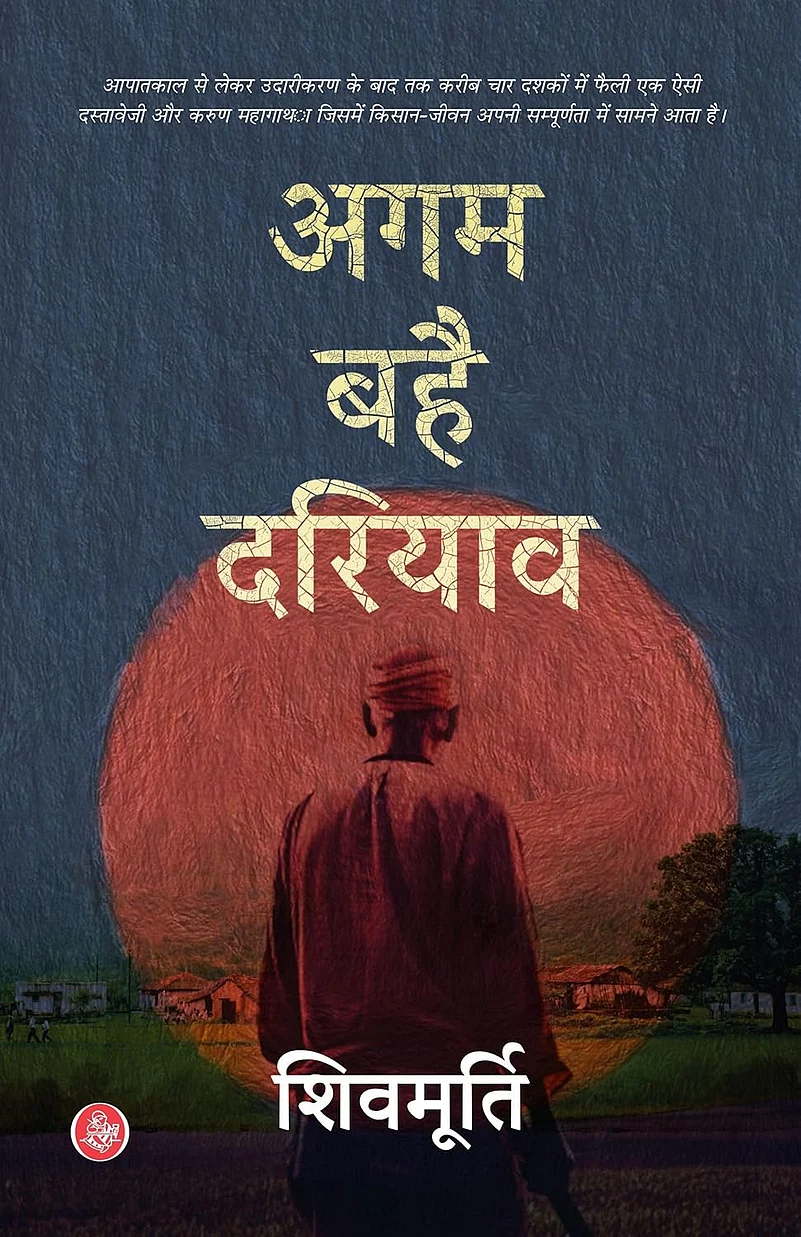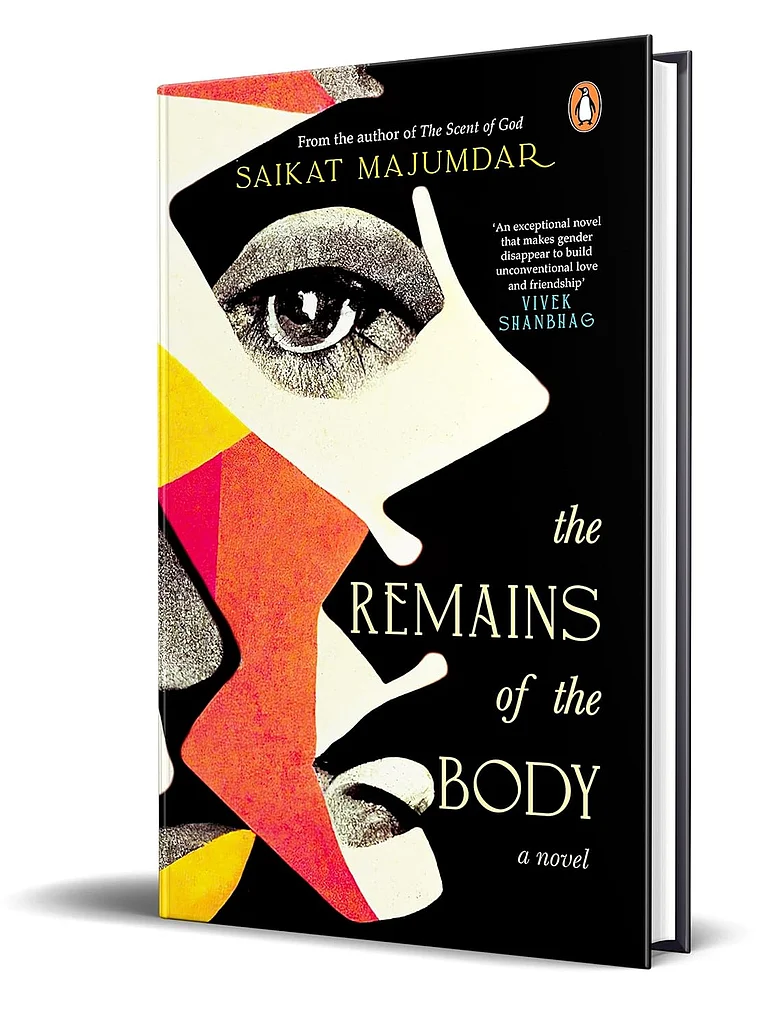Shivmurti, a renowned Hindi storyteller and novelist from Sultanpur, Uttar Pradesh, has written timeless stories such as ‘Kasaibada,’ ‘Siri Upma Jog,’ ‘Chhalang,’ ‘Bharat Natyam,’ and ‘Tiriya Charittar,’ as well as the ‘Keshar Kasturi’ collection. His celebrated novels include ‘Trishul’ and ‘Tarpan.’
Shivmurti’s latest novel, Agam Bahai Dariyav, tells the story of North Indian farmers whose lives are changing and often getting worse. Filled with love, suffering, and resistance, this novel draws readers in with its honest depiction of rural hardships and strength. It is remarkable to notice that these novel re-centres the long-absent farmer as a tragic hero in fiction. For the country's policymakers, it serves as a powerful 'ground report' of the conditions faced by farmers.
The Heartbeat of Rural Life
Shivmurti is a master storyteller of contemporary rural life, and Agam Bahai Dariyav represents the pinnacle of his experience and art of storytelling. This tale of Bankat village, nestled by the Kalyani River, portrays the plight of farmers and labourers throughout North India. It includes everyone, forward castes, backward castes, Dalits, and minorities each an equal stakeholder in this world.
This sets the stage for a deeply authentic journey into the life of farmers, told with a richness that only someone who has lived it could offer. Agam Bahai Dariyav, spanning four decades, tells the story of North Indian peasants whose lives are worsening over time. This river of sorrow captures the essence of the Indian farmer, whose strength, culture, humanity, and courage keep him alive despite national neglect.
A Saga of Survival
Starting in the month of Jeth, the novel quickly draws readers into a world of relentless hard work met with loss and disappointment. The sinister web of bribes, paper manipulations, court cases, and the deceit of Amins, Peshkars, and lawyers threatens to engulf the farmer in its corruption. The villagers are pitted against each other as government officials perpetuate their oppression. This is a story where every facet of farmer life is exposed love, revenge, resistance, honesty, deceit, legal battles, family ties, enthusiasm, hope, despair, and an enduring will to survive. This makes the novel a grand tale of the farmer's life in North India.
Shivmurti brings his story to life with a vivid cast of characters. People like Santokhi, Baitali, Bodha Bahu, Bhusi, and Chhatradhari Singh become familiar figures, their lives intertwined with the trials and triumphs of rural living. But the novel isn't just about people; it's also about the animals, birds, fields, barns, and crops that shape the farmers' existence. It portrays the ongoing battle for land, the harsh sting of caste discrimination, and the close dynamics of village life.
Socio-Political and Economic Commentary
Agam Bahai Dariyav is not just a work of fiction; captures the declining conditions of North Indian peasants over the decades, depicting their continuous struggle and deteriorating environment with authentic, lived experiences.
The novel’s scope extends beyond a single village, addressing socio-political and economic issues affecting the entire country. It touches upon historical events like the Emergency, sterilisation drives, and liberalisation policies, reflecting their impact on rural communities. The strong portrayal of rural women highlights their resilience and fighting spirit in the face of adversity. Shivmurti gives voice to these women, showing their ability to find solutions even in the most challenging situations.
Government corruption and bureaucracy also play significant roles in the narrative. The novel exposes bribery, manipulation of records, and legal battles that entrap farmers, painting a vivid picture of the systemic exploitation they face.
Tackling the Caste System
Shivmurti’s novel critiques the caste system and entrenched social hierarchies, creating diverse characters that reflect the complication of rural India. These characters in the novel, are drawn from diverse backgrounds, each bringing a unique perspective to the story. And this diversity makes the novel a microcosm of the large part of India.
It also explores the impact of governmental policies on rural life, and the everyday heroism of farmers, making it a serious and enlightening read.
The Power of Female Protagonists
The depiction of Sona and Bablu’s love affair highlights the nuanced understanding of justice and injustice. Sona’s character, along with other strong female protagonists, represents the dignity and resilience of rural women. Their struggles against social norms and systemic oppression add a layer of depth to the novel, making it a powerful commentary on gender dynamics in rural India.
Shivmurti’s narrative is filled with strong women who face the harshest challenges yet refuse to be defeated. Characters like Sona embody the spirit of resistance, fighting not just against social constraints but also against the personal and familial hardships they encounter. These women find ways to assert their identity and dignity, making their voices heard in a male-dominated world. Through their stories, the novel sheds light on the crucial role women play in rural communities, highlighting their courage and unwavering spirit in the face of adversity.
Linguistic Diversity and Cultural Harmony
One of the novel's most striking features is its language. Shivmurti uses the dialect of Sultanpur district in Awadh, adding authenticity and cultural richness to the narrative. The inclusion of folk songs, proverbs, and drama lyrics further enhances the novel’s cultural depth, making it not just a story but a repository of the region’s oral traditions.
The novel’s structure and storytelling style keep the reader engaged from beginning to end. Despite its complex themes and numerous characters, the story flows seamlessly, with no slackness in the plot.
The political dynamics of rural life, spanning four decades, are portrayed with such precision that the novel also serves as a document of the degradation of contemporary Indian politics.
A Timeless Epic
The novel Agam Bahai Dariyav is a story of the farmer as a tragic hero, bringing their struggles to the forefront. It is a stark reminder of the harsh realities faced by farmers, their continuous fight against exploitation, and their indomitable spirit. Shivmurti doesn't just tell the story of individual farmers; he weaves their personal experiences into the larger fabric of India's rural society.
You also feel it while reading that its central appeal lies in its innovative critique of language, contrasting the 'language of the neglected class' with that of the 'established class' in literature. The novel is a significant addition to Hindi literature, it carries forward the legacy of classics such as Godaan, and Raag Darbari.
(Ashutosh Kumar Thakur is a Bengaluru-based Management Professional, Literary Critic, and Curator)

















